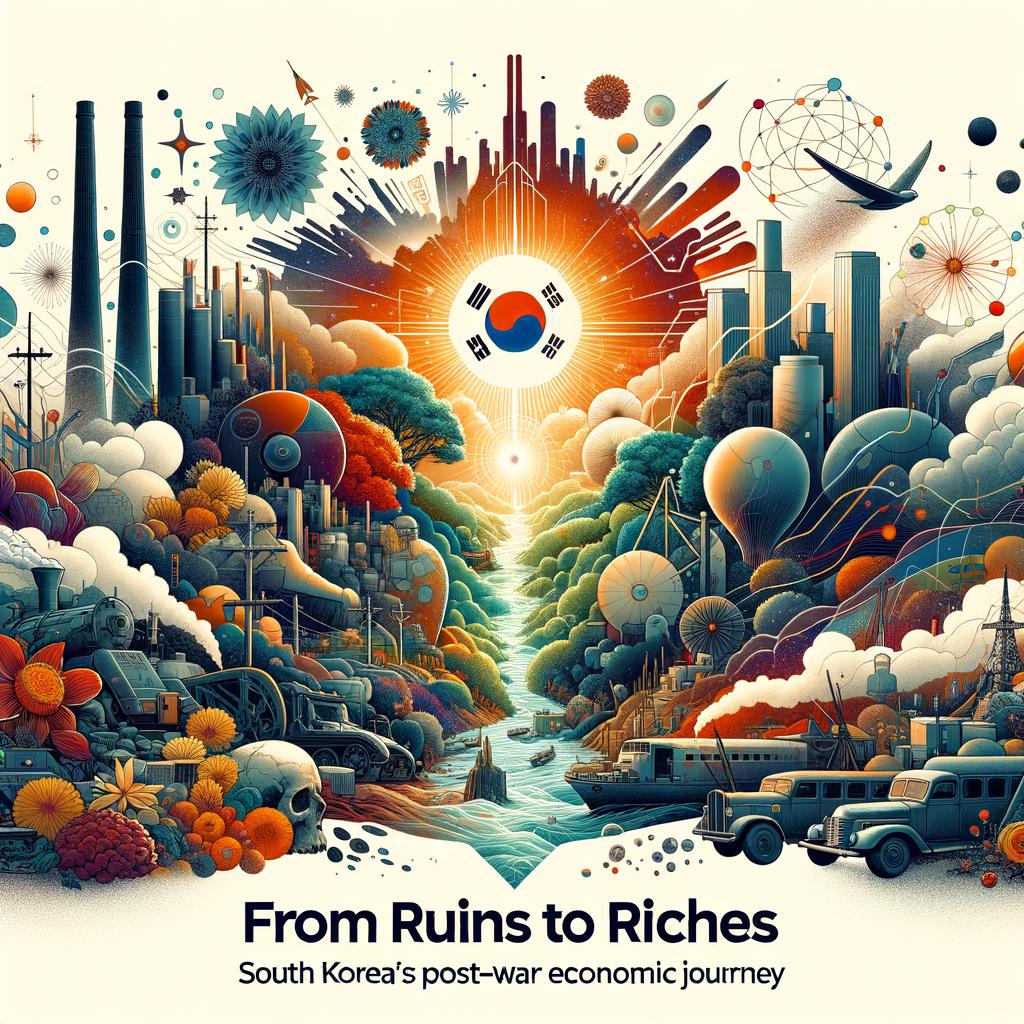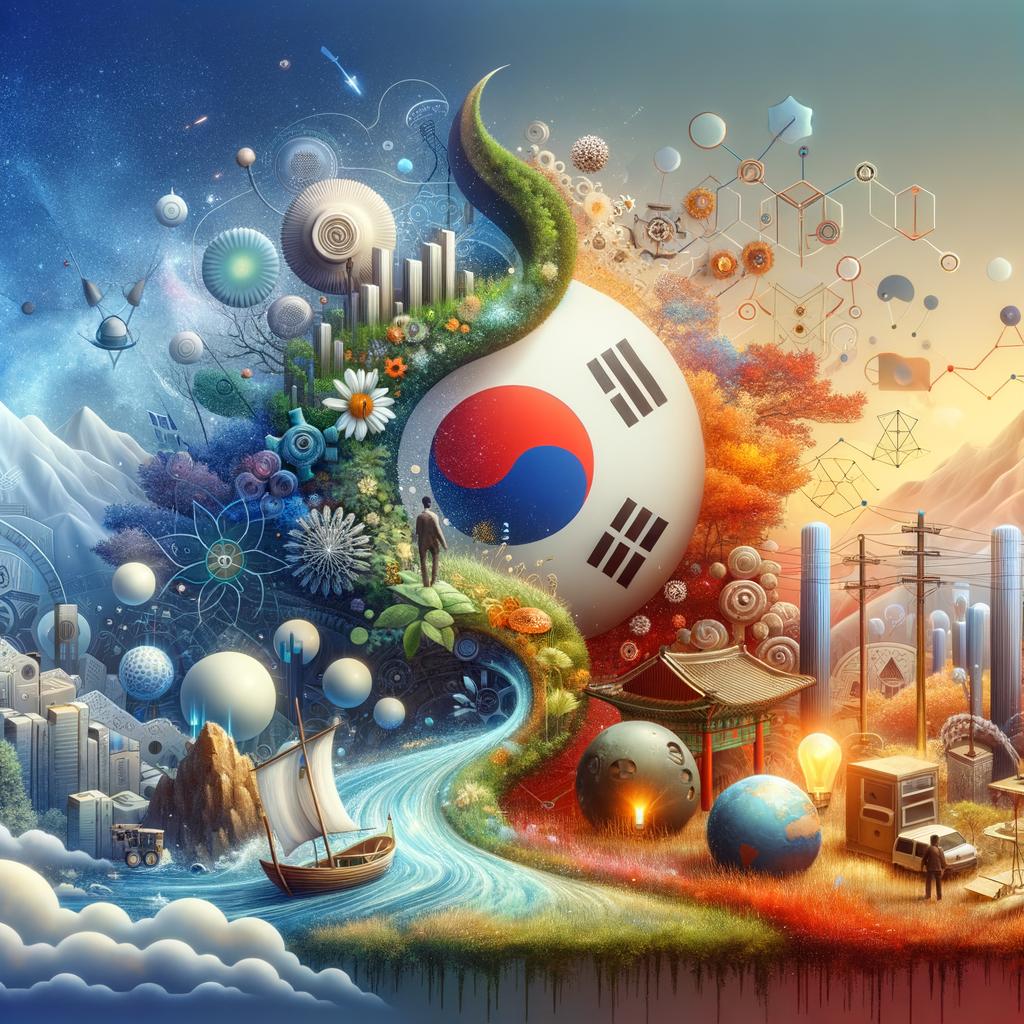In the wake of devastation, South Korea emerged from the ashes of war with an indomitable spirit and a vision for transformation. The aftermath of the Korean War left the nation grappling with shattered infrastructure, dwindling resources, and a population ravaged by conflict. Yet, what followed was a remarkable metamorphosis, a journey from ruins to riches that reshaped not only the South Korean landscape but also the global economic arena. This article delves into the intricate tapestry of policies, perseverance, and innovation that propelled South Korea from the brink of despair to the heights of economic prowess, shedding light on the strategies employed, the challenges faced, and the milestones achieved along the way. Join us as we explore how a divided nation forged an identity marked by resilience and ambition, crafting a success story that continues to inspire countries around the world.
Reviving a Nation: The Transformation of South Koreas Industrial Landscape
South Korea’s industrial revival is a profound testament to resilience and innovation. Following the devastation of the Korean War, the nation embarked on an ambitious journey towards economic growth, marked by strategic government initiatives and the emergence of powerful conglomerates, known as chaebols. The government’s dual approach focused on both import substitution and export-oriented industrialization, effectively shifting the economic paradigm. Key sectors such as steel, shipbuilding, and electronics were nurtured, creating a robust industrial base. As a result, South Korea evolved from a primarily agrarian society to a leading global industrial powerhouse in just a few decades.
The transformation was not without its challenges, but strategic planning and international partnerships played crucial roles. Important milestones included:
- Massive Investment in Education – Equipping the workforce with skills for modern industries.
- Technological Innovation – Prioritizing R&D to foster competitive advantages.
- Infrastructure Development – Building transportation and communication networks that supported industrial growth.
In a bid to visually capture the growth trajectory, the following table highlights South Korea’s industrial advancements over key decades:
| Decade | Main Industries | GDP Growth Rate |
|---|---|---|
| 1960s | Textiles, Light Manufacturing | 8.7% |
| 1970s | Shipbuilding, Chemicals | 9.0% |
| 1980s | Electronics, Automobiles | 9.8% |
| 1990s | Information Technology, Finance | 6.8% |
This transformation illustrates not merely economic growth but the birth of a resilient nation capable of competing on the world stage, underpinned by forward-thinking policies and a commitment to continuous improvement.

Education as the Cornerstone: Building a Skilled Workforce for Economic Growth
In the wake of the Korean War, the nation faced an enormous challenge in rebuilding its economy and society. Recognizing that a highly skilled workforce was crucial for long-term growth, South Korea embarked on a systematic overhaul of its education system. Emphasizing science, technology, engineering, and mathematics (STEM), the government implemented reforms that transformed schools and universities into premier institutions fostering innovation. This enabled students to cultivate vital skills, aligning education with industry demands. The focus on continuous learning and adaptability further empowered the workforce to engage with rapidly evolving global markets.
The impact of these educational initiatives on South Korea’s economic transformation is evident in various sectors. By investing in vocational training programs, the country ensured that its labor force was not only equipped for traditional jobs but also capable of thriving in burgeoning industries such as electronics and information technology. Key achievements include:
- High literacy rates: South Korea boasts an impressive literacy rate of 97%.
- Technological advancements: The nation stands as a leader in tech innovations, home to companies like Samsung and LG.
- Global competitiveness: South Korea consistently ranks high in global education assessments, contributing to its robust economy.
To illustrate the effectiveness of this educational framework, consider the table below, highlighting key milestones of South Korea’s education reforms:
| Year | Milestone |
|---|---|
| 1963 | Introduction of the New Curriculum |
| 1980 | Expansion of Higher Education Opportunities |
| 2000 | Emphasis on Global Competency in Education |
| 2015 | Incorporation of ICT in Learning |

Innovation and Technology: Pioneering South Korea’s Global Competitive Edge
Emerging from the debris of war, South Korea has cultivated an environment ripe for innovation, driven by a relentless pursuit of advancement. The government’s commitment to investing in research and development has played a pivotal role in transforming the nation from a labor-intensive economy to a leader in high-tech industries. Key initiatives, such as the promotion of smart factories and artificial intelligence, have positioned South Korea as a hub for technological innovation, encouraging startups and established firms alike to push the envelope of possibility. This commitment not only emphasizes the importance of education in the STEM fields but also nurtures a culture of entrepreneurship, paving the way for breakthroughs in various sectors, including biotechnology, information technology, and green energy.
Furthermore, South Korea’s strategic alliances with multinational companies bolster its competitive edge on the global stage. By developing collaborative ecosystems, the nation integrates local talent with international expertise, fostering an environment where innovation thrives. The robust support for incubators and accelerators has led to a flourishing startup scene, wherein novel ideas can rapidly transition into market-ready solutions. The tables below showcase some of the critical sectors driving this innovation landscape:
| Sector | Key Contribution |
|---|---|
| Telecommunications | 5G Implementation |
| Automotive | Electric Vehicle Development |
| Biotechnology | Pharmaceutical Innovations |
| Renewable Energy | Solar and Wind Technologies |

Sustainable Development: Ensuring Inclusive Growth for Future Generations
In the decades following the devastating Korean War, South Korea transformed from a war-torn country into one of the world’s leading economies, showcasing a commitment to sustainable development that focuses on equitable growth. Central to this transformation was the establishment of robust policies aimed at fostering innovation, education, and infrastructure development. This economic renaissance was characterized by:
- Investment in Human Capital: The government prioritized educational reform, ensuring that the workforce was equipped with the skills needed for emerging industries.
- Technological Advancement: A commitment to research and development saw South Korea emerge as a leader in technology, particularly in sectors such as electronics and automotive.
- Environmental Sustainability: The focus on sustainable practices led to the adoption of green technologies and renewable energy sources, helping to mitigate the effects of industrialization.
As part of this evolving narrative, the South Korean government enacted policies that not only addressed immediate economic needs but also prioritized long-term social equity. By implementing comprehensive social welfare programs, they aimed to reduce poverty and inequality, ensuring that growth reached all segments of the population. The following table highlights key indicators of South Korea’s inclusive growth:
| Indicator | 2010 | 2020 | % Change |
|---|---|---|---|
| GDP per Capita ($) | 20,000 | 31,000 | 55% |
| Poverty Rate (%) | 16.5 | 10.0 | -39.4% |
| Renewable Energy Share (%) | 2.6 | 6.7 | 157.7% |
In Summary
As we close the chapter on South Korea’s remarkable journey from the ashes of war to the heights of economic prowess, it becomes clear that this transformative narrative is not merely a national story but a universal testament to resilience and ingenuity. The post-war era, marked by hardship and struggle, set the stage for an unprecedented economic renaissance, fueled by a collective dream of progress and prosperity. From strategic government policies and industrial innovation to the indomitable spirit of its people, South Korea has woven a tapestry of success that inspires nations around the globe.
Yet, this journey is not without its complexities—challenges such as inequality, environmental concerns, and the ever-evolving global landscape loom on the horizon. As we reflect on how far South Korea has come, it also prompts us to consider the future: how will this vibrant nation navigate the next phase of its economic story?
In exploring the lessons of South Korea’s post-war economic miracle, we find echoes of hope and possibility that resonate far beyond its borders. For those looking to understand how adversity can give rise to opportunity, South Korea’s tale offers valuable insights—a reminder that even from the deepest ruins, with vision and perseverance, remarkable riches can emerge.

